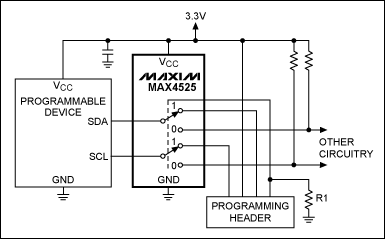编辑
删除
Programming Microcontrollers in C (Second Edition),Author : Ted Van Sickle | Publisher : LLH Technology Publishing | ISBN : 1878707574 | PDF | 6.6 MB | 470 pages | 2001
Introduction to Second Edition
Today, even more than when the first edition of this book was written,
the use of microcontrollers has expanded to an almost unbelievable level.
A typical car has 15 microcontrollers. A modern home can have more than
50 microcontrollers controlling everything from the thermostat, to the
furnace, to the microwave. Microcontrollers are everywhere! In the meantime,
many new chips have been placed on the market as well.
Also, there have been significant modifications to our programming
languages. The standard C language is now called C99 rather than C89.
There have been several changes in the language, but most of these
changes will not be available to us for some time. Many of the modifications
to the language will be of little use to programs for embedded
systems. For example, complex arithmetic has been added to the language.
It is rare that we use even floating-point arithmetic, and I have
never seen an application for an embedded system where complex arithmetic was needed. However, other additions allow improved optimization processes, such as the restrict keyword and the static keyword used to modify the index of an array. Other changes have less impact on the
generation of code, such as the // opening to a single line comment. Also,
today you will have no implicit int return from a function. All in all, expect the new versions of C compilers to be significant improvements over the older versions. Also, expect that the new compilers will not break older code. The features of the new standard should begin showing up in any new version of the compilers that you use.
The C++ standard committee has completed its work on the first language standard for C++. There is much clamor about the use of C++ for embedded systems. C++ as it stands is an excellent language, but it is aimed primarily at large system programs, not the small programs that we will be developing into the future. C still remains the grand champion at giving us embedded programmers the detailed control over the computer that we need and that other computer languages seem to overlook.
The first six chapters of the book have been revised and any errors that
were found were corrected. Every chapter has been altered, but not so
much that you would not recognize it. Chapter 7 has been added. In that
chapter, a relatively complex program is developed to run on the
M68HC912B32. The development system was based on this chip and it
had no significant RAM to hold the code during development. Therefore,
all of the code was completely designed, coded, and tested on a DOSbased system. Extensive tests were completed to make certain that there
were no hidden bugs. The modules were small and easy to test. Each
module was tested with a program written to exercise all parts of the
module. When the several modules were integrated into a single program,
the program worked in the DOS-based system. All changes needed to
convert this program were implemented under the control of conditional
compiler commands. When the program was converted to the M68HC12
version and compiled, it loaded correctly and ran.
Chapter 8 introduces a new chip for Motorola, the MMC2001. This
chip is a RISC chip. Many of the good things to be said of RISC
configurations are absolutely true. This chip is very fast. Each of its
instructions requires only one word, 32 bits, of memory. Almost all
instructions execute in a single clock cycle. The chip that I used here ran at
32 mHz, and you could not feel any temperature rise on the chip. It is from
a great family of chips that should become a future standard.
The first edition of this book had several appendices. These were
needed to show general background material that the reader should not be
expected to know. Also, quite a few specialized header files used to
interconnect the program to the peripheral components on the
microcontroller were included. Also, with the first edition, there was a
card with which the reader could order two diskettes that contained all of
the source code in the book, demonstration compilers that would compile
the source code, and other useful information. All of these things have
been included on the CD-ROM that comes with this edition. Additionally,
you will find PDF versions of all appropriate Motorola data manuals and
reference manuals for all of the chips discussed in the book. Also included
are copies of all header files used with the programs, and some more that
will probably be useful to you.
Chapter1 Introduction to C
Chapter2 Advanced C Topics
Chapter3 What Are Microcontrollers?
Chapter4 Small 8- Bit Systems
Chapter5 Programming Large 8- Bit Systems
Chapter6 Large Microcontrollers
Chapter7 Advanced Topics in Programming Embedded Systems ( M68HC12)
Chapter8 MCORE, a RISC Machine
non Rapidshare Download
 电子发烧友App
电子发烧友App





















评论